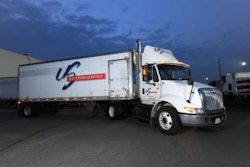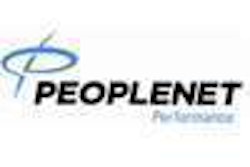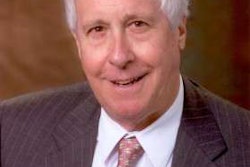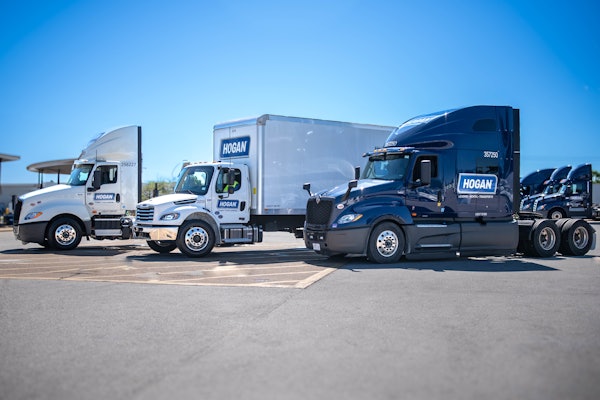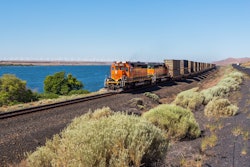It’s EGR vs. SCR in the 2010 emissions fight,and neither side is pulling any punches.
With less than six months to go before Jan. 1, 2010, few rounds remain in the bout between the two approaches for meeting the U.S. Environmental Protection Agency’s diesel emissions mandate. Selective catalytic reduction (SCR) introduces a urea solution known as diesel exhaust fluid (DEF) to neutralize nitrogen oxides (NOx) in the exhaust stream. Advanced exhaust gas recirculation (EGR) combines today’s approach with high-pressure common-rail fuel injection and electronically controlled air and fuel management. While differences between the two paths sound like a matter for engineers and gearheads, there’s much at stake for fleet owners and for the truck and engine makers that supply them.
Most heavy-duty diesel engine makers – Cummins, Detroit Diesel, Mack, Paccar and Volvo – have chosen SCR, leaving Navistar standing alone with advanced EGR. The fight between the two camps has been public and often quite pointed. Navistar was the early aggressor, attacking SCR on the grounds of added cost, maintenance and weight due to the aftertreatment hardware and the need to carry and replenish DEF. The basic message is that advanced EGR places the burden of emissions compliance on the truck maker, not the fleet owner. Navistar also has attacked DEF itself and most recently has taken its fight to court, arguing that EPA illegally adopted lax ground rules for operation of SCR-equipped trucks when the aftertreatment system isn’t working. (See “Seeking the judges’ ruling,” page 50.)
The other truck and engine makers respond that SCR has been used successfully in industrial applications in the United States for decades and in European heavy-duty trucks for several years. But while Navistar often has put its competitors in a defensive posture, SCR proponents aren’t exactly adopting a “rope-a-dope” strategy; they are getting in a few jabs of their own.
Because an aftertreatment allows for less aggressive EGR than today’s engines, SCR-equipped engines will have greater fuel economy than their 2007-technology counterparts and, probably, Navistar’s 2010 engines, the engine makers say. Some competitors further question whether Navistar truly has a high-displacement option for 2010. And for fleets that might be concerned with actual emissions performance, some SCR proponents point out that Navistar’s engines will emit more NOx than others, achieving regulatory compliance by cashing in emissions credits. On the other hand, EPA condones the use of credits as a reward for early emissions reductions.
The protracted fight has been tedious at times and mildly entertaining at others, but the stakes for fleet owners are increasingly high. With neither time nor economic conditions allowing for a significant pre-buy of today’s engines, truck buyers may need to become comfortable with 2010 engines fairly quickly once freight demand returns.
In the SCR corner
Most truck and engine makers opted for SCR because they determined it was the best way to achieve EPA’s aggressive emissions-reduction mandate for 2010, which limits NOx to 0.2 grams of NOx per brake-horsepower-hour (g/bhp-hr).
But while SCR is foreign to heavy-duty trucks in the United States, it’s a longstanding emissions-control technology in other applications. “SCR isn’t voodoo,” says Dave McKenna, director of powertrain sales and marketing for Mack Trucks. “SCR technology has been around since 1957 in commercial and industrial applications. It’s a simple means of removing NOx from our atmosphere.”
In reality, the technology for 2002 and 2007 was less proven than SCR, says Ed Saxman, product manager-drivetrains for Volvo Trucks North America. “We’re going into 2010 with far more testing and experience behind SCR than we ever had on our previous emissions systems.”
In a heavy-duty truck, here’s what happens: As exhaust gases leave the engine, but before they exit a truck’s exhaust pipe, they flow through a catalytic converter where they are sprayed with DEF – a solution of 67.5 percent deionized water and 32.5 percent urea. When the super-hot NOx combines with the urea in this solution, it chemically converts into water and nitrogen. (For a diagram showing how SCR works, see page 54.)
For all the attention DEF has attracted, the fluid itself is colorless, odorless and not classified as a hazardous or toxic material by the U.S. Environmental Protection Agency. “Some of the claims that were made about DEF over the past couple of years are patently untrue,” Saxman says. “DEF is not explosive, it’s not flammable, it’s not an aggressive substance. Put it on your hands, and they are no more irritated than if you get diesel fuel on them.”
DEF weighs 9.2 pounds per gallon. It starts to gel at 25 degrees Fahrenheit and freezes at 12 degrees, but all SCR manufacturers have placed immersion heaters in their DEF tanks. Besides, DEF thaws rapidly and is not affected adversely by freezing, explains McKenna. “SCR trucks will start and run with frozen DEF in the tanks. We have done extensive cold-weather testing and found no operational issues related to frozen DEF.”
There are some heat-related DEF issues, although Detroit Diesel testing has shown that it has a shelf life of 44 months when kept at a constant 74 degrees Fahrenheit and can last as long as seven months at 95 degrees, says David Siler, director of marketing for Detroit Diesel, a unit of Daimler Trucks North America.
The SCR system consumes DEF at a rate of 2 to 3 percent of the truck’s fuel consumption, Siler says. Daimler will offer the choice of 6-, 13- and 23-gallon DEF tanks. A 23-gallon DEF tank offers a range of 6,000 miles, while a 13-gallon tank will have a range of 3,900 miles, he says.
Because DEF costs money and its only purpose is to reduce emissions, EPA requires mechanisms to deter drivers from operating without DEF or a working SCR system. EPA outlined its most recent guidance in a Feb. 18 document, establishing warnings and engine derate requirements in the event that the DEF tank runs dry, the DEF is of poor quality or the SCR system stops working.
In Daimler trucks, a series of color-coded green, yellow and red dash lights – in addition to a DEF gauge – will inform drivers of the tank level, Siler says. When the DEF tank runs dry, or if sensors detect high emissions due to improper fluids in the tank (water, for example), the engine will derate to 35 mph – enough to get to a truckstop for a refill. Eventually, the engine will derate to only 5 mph in extreme cases. But given DEF’s long legs, Siler thinks it is highly unlikely drivers will be unable to find DEF and keep their tanks full. (For information on DEF distribution, see “Ramping up for DEF,” page 52.)
In the EGR corner
One reason for today’s debate is that Navistar built a sizable cache of emissions credits by supplying diesel engines for Ford pickups and its own medium-duty trucks that exceeded regulatory minimums. As long as credits last, Navistar can comply with MaxxForce engines certified at 0.5 g/bhp-hr or better rather than 0.2 grams. Similarly, Cummins accumulated credits by supplying diesel engines for the Dodge Ram pickup and medium-duty trucks. It also had planned to rely on EGR for Class 8 engines until it shifted gears last August, citing technological advancements and the sky-high diesel prices that make SCR attractive. (See “Cummins’ big switch,” September 2008.)
Navistar says its in-cylinder solution relies on several key technologies:
·A high-pressure common-rail (HPCR) fuel system;
·Dual turbochargers and advanced air management;
·A proprietary piston bowl design; and
·Navistar electronics.
With the economy and higher fuel prices dampening light-duty diesel sales, it’s unclear how long Navistar will be able to rely on credits to maintain compliance with EPA regulations. But the company says it’s a moot point: Navistar expects to meet the 0.2 gram requirement by 2012 using only EGR, says Tim Shick, director of business and product strategy for Navistar Engine Group.
“We have both versions of those engines on the road today,” Shick says. “The difference between today’s engine and the 0.5 version we’ll release next year is higher fuel pressures and a higher EGR rate. And the difference between 0.5 engines and our 0.2 engines will be even higher fuel pressures and EGR rates.”
Competitors believe Navistar eventually will have to surrender to SCR, but Shick disagrees. “As of right now, we are an EGR-only engine manufacturer,” he says. “And there is no indication we will manufacture or offer independent engine brands with SCR on our trucks. We’re looking really good with where we’re going with EGR.”
One other issue is Navistar’s 15-liter option for 2010. Navistar’s 15-liter MaxxForce 15 – combining Navistar technology with the Caterpillar C15 foundation – won’t be ready until early 2011. To bridge the gap, the company expects to carry over some current-technology 15-liter engines into 2010 truck production as other manufacturers may do, and it is working with Cummins on a transitional 15-liter engine. In addition, Navistar believes that many customers will choose to move from 15-liter to 13-liter engines due to weight and fuel economy.
As for the MaxxForce 11 and 13, Shick acknowledges questions about why Navistar doesn’t just meet the 2010 threshold immediately. “We could. But meeting the (0.2 gram limit) isn’t the challenge. If you put enough exhaust gas back into the engine, you’re going to get to 0.2 eventually. The challenge is recalibrating iteration after iteration after iteration to make sure you get the very best fuel economy and performance possible. And that’s what takes time.”
Leading with fuel economy
In their battle for fleet preference, the SCR and EGR camps are playing to their respective strengths. For SCR-equipped engines, that means focusing primarily on fuel economy, especially since diesel prices are up 60 cents or more since February.
SCR engine suppliers say that dealing with NOx through an aftertreatment allows them to dial back on EGR and recapture fuel efficiency that has been lost over the last couple of regulation-driven changes.
“For the most part, fuel economy has taken a hit with each level of EGR that has been implemented,” says Rich Moskowitz, vice president and regulatory affairs counsel for the American Trucking Associations. “According to our members, most fleets saw on average an 8 percent hit, since EGR’s lower-combustion temperatures reduce engine efficiency,” Moskowitz said last month at a NATSO-PEI Diesel Exhaust Fluid Conference in Nashville, Tenn.
Because of greater combustion efficiency, trucks equipped with SCR will see improvements in fuel economy, Daimler’s Siler says. “Our 2010 DD15 engine will get between 3 and 5 percent better fuel economy than our current engine, and we think those numbers will only improve in the long run,” he says. Even after factoring in the cost of DEF, Daimler expects SCR to produce a positive economic impact for fleets.
To that point, Volvo Trucks North America announced in June that it is accepting orders for SCR-equipped trucks meeting the 2010 regulations and plans to begin building production trucks this fall.
“A number of customers have expressed an interest in placing SCR-equipped units in their fleets ahead of 2010,” says Scott Kress, senior vice president-sales & marketing for Volvo. “This gives early adopters the opportunity to gain familiarity with the technology and the benefits of SCR.”
Con-Way Truckload has been testing several SCR-equipped trucks for the past year, and although it’s still early, the results are positive, says Bruce Stockton, vice president of maintenance and asset management.
“We’re getting increased fuel mileage and haven’t had any serious maintenance issues,” Stockton reports. “The biggest problem right now is that we’re having difficulty finding DEF on the road and we’re forced to supply it from our home office. Fortunately, our test drivers are on dedicated routes, so they come through here twice a week to refill, and they carry DEF on board the trucks as a precaution.”
Penske Truck Leasing to date has put more than 200,000 miles on several test trucks, including midrange models, says Mike Hasinec, vice president-maintenance systems/support. “So far, we have not seen any reliability or maintenance issues. And the trucks have been well received by customers participating in the evaluations.”
Countering with a combination
Navistar doesn’t claim that its advanced EGR MaxxForce big bore engines will match the fuel economy of SCR engines – yet. But Shick argues that Navistar’s development curve ultimately will yield EGR engines with fuel economy, power and durability comparable to SCR units – and without any added upfront costs.
Shick says Navistar is going with EGR-only because of the simplicity of the design, noting that drivers will not have to worry about filling an additional tank with DEF, nor will they have to worry about the engine derating if the urea tank runs dry. Shick also points out that SCR will add from 300 to 600 pounds of additional components to a heavy-duty diesel truck depending on its size. Detroit Diesel estimates 250 to 400 extra pounds, according to a spokesperson.
And even if emissions regulations ultimately force Navistar to adopt an SCR aftertreatment, the company has argued that a DEF-based system is “stranded technology.” Several suppliers are developing emissions technologies that generate the NOx-reducing catalyst onboard the truck without the need to add DEF, the company notes. (See Equipment InFocus, May 2009, for a discussion of some emerging technologies.) Navistar’s competitors, however, doubt such technologies will be practical in the foreseeable future.
Biagi Bros. is one trucking company that is concerned about SCR. “We feel that there will be start-up issues and setbacks that will affect the reliability of the truck,” says Gregg Stumbaugh, corporate equipment director for the Napa, Calif.-based regional van carrier. Biagi experienced numerous software updates on the last big emissions deadline, and Stumbaugh hopes to avoid similar issues this time.
Stumbaugh is worried about the additional cost of SCR technology – which could run $8,000 to $10,000 per new truck – as well as the additional weight SCR adds to each chassis. “We also don’t know enough about the additional costs for maintenance and repair of SCR systems over the life of the truck,” he notes. “And we don’t know how reliable the SCR system as a unit will be over the life of the truck. The bottom line is that our company does not want to be a ‘guinea pig’ for the SCR system.” Biagi Bros. currently is testing an International truck with a MaxxForce advanced EGR engine.
With its concerns over weight, cost and maintenance, Biagi Bros. is the kind of fleet that makes a good target for Navistar, but more specialized operations could be even better targets. Although Shick believes EGR will work well in all trucking applications, he feels there are specific applications where it will prove to be the preferred emissions solution.
“Since the big advantage of EGR is it adds no weight and bulk from additional apparatus and requires no technician/driver involvement, we think its biggest impact would probably come in complex vocational body applications like aerial lift trucks, municipal vehicles/snowplows, digger derricks and refuse packers that will be challenged by the additional weight and bulk of SCR apparatus,” Shick says.
No surrender
It’s an argument Detroit Diesel’s Siler isn’t buying. “With the Detroit Diesel BlueTec emissions technology, we know that our customers will benefit from not only better fuel economy but also a cleaner running system,” he counters. “Plus, we aren’t ready to concede the question regarding complexity and packaging. With Damiler’s BlueTec 1-Box system, we have been able to integrate the aftertreatment and chassis into a surprisingly compact and simple design.”
Putting aside the questions of packaging, weight, maintenance and acquisition cost, the operating economics of SCR and EGR come down to the prices of diesel and DEF, the fuel economy benefits of SCR and the DEF dose rate, notes ATA’s Moskowitz. (For ATA’s analysis of the financial impact of engine technology given the range of assumptions, see “Running the ‘what ifs’,” page 54.)
“ATA thinks it is great trucking companies will have a choice in emissions technologies,” Moskowitz says. “There are many different types of truck fleets operating in many different environments in many different applications. So there is no ‘one-size-fits-all’ solution here. There will be niches where EGR is clearly the dominant technology, and niches where SCR makes the most sense.”
What’s the bottom line for fleets? It may be too soon to tell where pricing is going for diesel and DEF and, more importantly, whether there will be any demand for new trucks in early 2010. If the current economic slump continues and a rebound in freight is slow in coming, most fleets will be able to take a wait-and-see approach. But with an aging fleet, a sudden turnaround could answer questions about the 2010 technologies faster than usual following a major change.
Seeking the judges’ ruling Navistar goes to court to block SCR
This spring, while Navistar and its competitors were sparring in public over selective catalytic reduction (SCR) versus advanced exhaust gas recirculation (EGR), Navistar quietly took the fight to another arena. On March 31, the company filed a challenge in the U.S. Court of Appeals for the District of Columbia Circuit to the U.S. Environmental Protection Agency’s certification requirements for heavy-duty engines using SCR.
The lawsuit relates to a Feb. 18 EPA document that provides guidance to manufacturers on various issues surrounding SCR, including the size of the diesel exhaust fluid (DEF) tank, the performance of DEF in freezing conditions and the various actions to compel drivers to replenish DEF. Navistar is challenging EPA’s ability to adopt the SCR guidance without a rulemaking proceeding.
In a May 4 filing, Navistar noted that EPA’s 2001 rule established a 0.2-gram nitrogen oxides (NOx) standard for 100 percent of trucks sold with model year 2010. It also found SCR not to be a feasible technology to meet the standard for various reasons. Navistar charges that EPA’s Feb. 18 guidance relaxes the 0.2 gram standard and approves a control technology that EPA in 2001 concluded would not allow the standard to be met on a fleetwide basis. The truck maker also alleges that the 2009 guidance imposes entirely new regulatory requirements and allows diesel engine manufacturers to release uncontrolled NOx emissions on the highway, create highway safety hazards and certify engines to an emissions standard that the engines will exceed.
On June 1, Cummins, Daimler Trucks North America, Detroit Diesel, Mack Trucks and Volvo Group North America jointly filed a motion with the appeals court to participate in the case as “amici curiae” – Latin for “friends of the court.” The manufacturers said that they would offer an important perspective on the issues Navistar raises and that they would suffer serious consequences if the court ruled in a way that undermined EPA’s 2001 standard and 2009 SCR guidance. Because the guidance clarified how certification testing will be conducted, manufacturers and suppliers “would face substantial uncertainty over the EPA certification procedures for SCR-equipped heavy-duty vehicles.” They pointed out that they had “expended significant resources over many years in good faith, research, development, prototype testing and certification effort.”
Navistar and its competitors traded another round of legal punches in June, and the case now awaits further action by the court.
– Avery Vise
A copy of EPA’s Feb. 18 guidance is available in the electronic version of this article at www.ccjmagazine.com.
Ramping up for DEF Lagging economy could slow fixed installations
One of the longstanding concerns with DEF has been distribution at truckstops and other over-the-road fueling locations. That was one of the U.S. Environmental Protection Agency’s early worries, but Cliff Dean with EPA’s Office of Transportation and Air Quality says the agency now is convinced DEF will be readily available in January of next year.
“I believe DEF will be easily available, but more common as a packaged product initially,” says Brendan Foster, president of DEF pump distributor Benecor. Owing to economic conditions, the market is taking a conservative approach toward rolling out larger quantities and incurring the costs that entails, Foster says. So truck owners will be getting bottles, barrels or totes early on, and “the larger above-ground systems will lag due to low truck production and capital requirements.” At least in the beginning, topping off DEF tanks before vehicles leave the yard might provide for greater control over pricing, Foster says.
Meanwhile, the SCR infrastructure is gearing up. On the supply side, Old World Industries announced last month that it plans to distribute its BlueDEF brand of DEF using its supply network of 10 production locations and more than 4,500 distribution points. Terra Environmental Technologies struck deals with Daimler, Volvo and Mack for TerraCair Ultrapure DEF to be the initial-fill DEF for those manufacturers. And Cummins Filtration announced that it has expanded its Fleetguard DEF product line to include 1-, 2.5- and 5-gallon containers, as well as the 330-gallon plastic totes, 275-gallon disposable totes and 55-gallon plastic drums that previously were available. The company also announced that it recently had gained American Petroleum Institute certification for its Fleetguard DEF product.
On the distribution side, TravelCenters of America announced last month that all 234 of its branded locations, which include Petro Stopping Centers, are stocked with 2.5-gallon containers of DEF supplied by Colonial Chemical Co. TA also says that DEF now is available to the 400 RoadSquad emergency roadside assistance vehicles at TA and Petro locations for trucks that run out of DEF while on the highway.
– Jack Roberts and Avery Vise
The 2010 lineup Engine makers say they are ready
Cummins | www.everytime.cummins.com
The engine maker changed course and announced in August 2008 that it would use selective catalytic reduction (SCR) with heavy-duty engines. It says the U.S. Environmental Protection Agency has no concerns regarding the use of its copper zeolite-based catalyst, which the engine maker says provides a much higher NOx conversion efficiency than iron zeolite catalysts. Cummins also says it is on track to exceed its field test mileage target for both its heavy-duty and midrange engine lines. At production launch in January 2010, Cummins heavy-duty field testing will top 3 million miles, and midrange field testing will approach 2 million miles. The company reports positive feedback on performance and fuel economy from field test customers.
Detroit Diesel | www.detroitdiesel.com/emissions/epa2010
Detroit Diesel says it designed the DD13, DD15 and DD16 engines with 2010 emissions regulations and SCR aftertreatment in mind, so the engines themselves will see virtually no changes from the current design. The company says its 1-Box BlueTec SCR design integrating the diesel particulate filter (DPF) offers compact packaging and enhanced exhaust flow.
Mack Trucks | www.mackscr.com
Mack says its engines do not change for 2010. The company introduced the first member of its Mack MP engine series – the 11-liter MP7 – in late 2005 in an EPA ’04 configuration. Now, for EPA ’07, Mack offers the MP7, MP8 (13-liter) and recently-introduced MP10 (16-liter). All were designed from the beginning with the EPA’10 regulations in mind.
Navistar | www.maxxforce.com
Navistar says no changes will be made to its exhaust gas recirculation (EGR) MaxxForce 11 and 13 big bore engines for 2010, and there will not be an SCR aftertreatment system. Navistar says its 2010 engine models have been in commercial service since January 2007 and have logged hundreds of millions of real-world miles. Navistar plans to introduce a 15-liter MaxxForce 15 in early 2011 and will bridge the gap with a combination of 2009 engines carried over into 2010 and a transitional 15-liter engine that it isn’t yet discussing publicly. Navistar also believes that many customers will choose to move from 15-liter to 13-liter engines due to weight and fuel economy.
Paccar | www.paccar.com/engines
The parent company for both Kenworth and Peterbilt trucks has not released the exact number of test trucks in its test program, nor the miles that program has accumulated to date. A company spokesman says Paccar is actively testing the 2010 engines – through field tests with customers, with trucks running on its test tracks and road tests conducted by company personnel, and in test labs to identify issues and validate components and installations – and notes the company is planning for engine availability in January 2010.
Volvo | www.volvoscr.com
There will be no changes to Volvo’s family of diesel engines in 2010 beyond the addition of SCR aftertreatment systems to meet EPA ’10 emissions requirements. Volvo has more than 150,000 SCR trucks on the road in Europe and has logged more than 2 million test miles on its 2010 engines in the United States alone. The manufacturer also emphasizes that its 2010 solution will eliminate active regeneration of DPFs during normal highway operations.
Running the ‘what ifs’Operating costs depend heavily on the price of diesel and DEF
The following is an American Trucking Associations analysis of the routine operating costs for a truck using selective catalytic reduction (SCR) assuming realistic conditions most favorable to both SCR and advanced exhaust gas recirculation (EGR) solutions. The analysis does not take into account, however, some potentially important considerations, such as acquisition cost, weight and maintenance. In the operating cost analysis, the key variables are the price of diesel fuel, the price of diesel exhaust fluid (DEF), the fuel economy benefits of SCR engines and the DEF dose rate.
Most favorable to SCR
Assume fuel economy increase of 5%:
– Truck getting 6 mpg improves to 6.3 mpg
Assume 120,000 miles per year:
– Fuel consumption goes from 20,000 to 19,048 gal.
(Save 952 gallons)
Assume $5 diesel
– 952 gal. x $5 diesel = $4,760 diesel savings
Assume $2 DEF and 2% dose rate
– 19,048 gal. x (2%) = 380 gal. DEF
– 380 gal. x $2 = $760 DEF cost
Hypothetical savings from SCR: $4,000
Most favorable to EGR
Assume fuel economy increase of 3%:
– Truck getting 6 mpg improves to 6.18 mpg
Assume 100,000 miles per year:
– Fuel consumption goes from 16,666 to 16,181 gal.
(Save 485 gallons)
Assume $2.25 diesel
– 485 gal. x $2.25 diesel = $1,091 diesel savings
Assume $4 DEF and 3% dose rate
– 16,181 gal. x (3%) = 485 gal. DEF
– 485 gal. x $4 = $1,940 DEF cost
Hypothetical cost increase with SCR: $849



